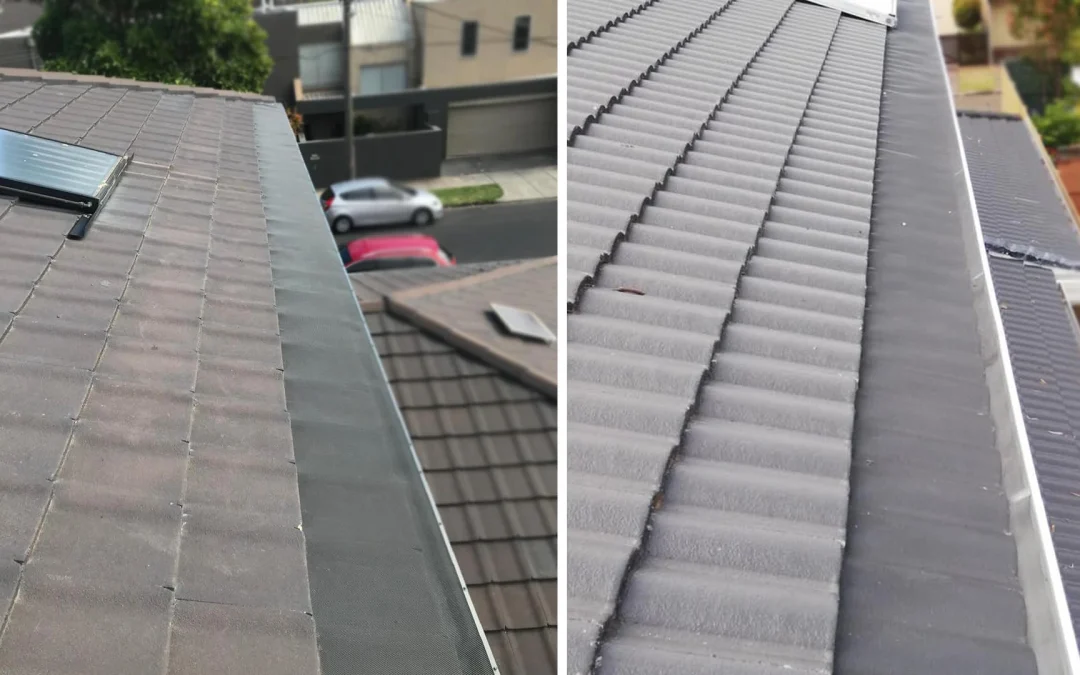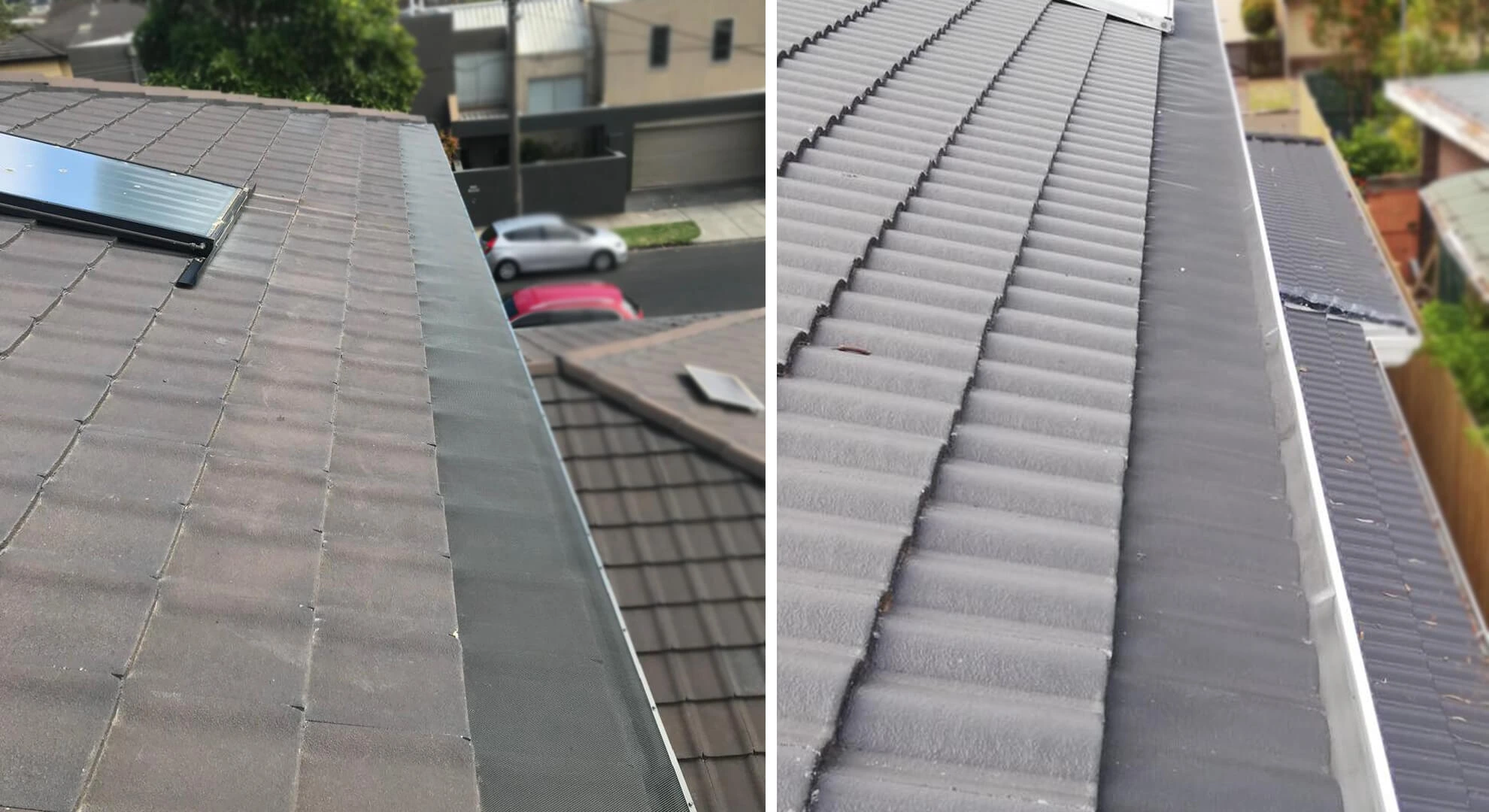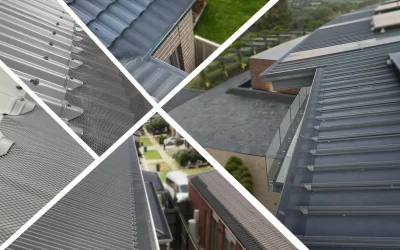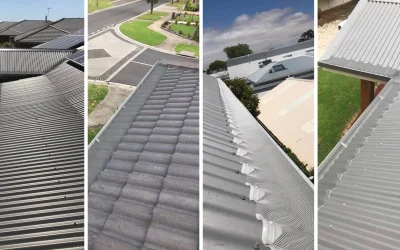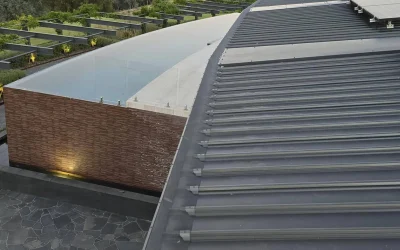Gutter Guard Mesh is a screened cover fitted over your gutters (and often roof valleys) to keep leaves, sticks, and embers out while letting water in. In bushfire-prone parts of Australia, there’s a specific concept called an ember guard: a non-combustible screen with very small openings (maximum 2 mm) designed to stop embers getting into gaps, vents and gutters. That 2 mm maximum aperture and non-combustible requirement comes straight from AS3959, the Australian Standard for building in bushfire-prone areas.
Quick takeaway: If you live in a bushfire zone, choose mesh that’s non-combustible and ≤ 2 mm aperture so it can function as an ember guard where required.
Why it matters in Australia: fire, water, and wildlife
1) Bushfire resilience (the ember problem)
Embers, not towering flame fronts, are responsible for a huge share of home losses during bushfires. Peer-reviewed research and government/industry summaries repeatedly point to embers causing many structural ignitions in wildfires. That’s why sealing ember entry points (including gutters) makes such a difference.
NSW Rural Fire Service preparedness advice is clear: clean gutters and install metal gutter guards as part of your property prep. It’s practical, relatively inexpensive, and reduces one of the easiest ember pathways to your roof space. If your gutters are clean and screened with a non-combustible Gutter Guard Mesh that doubles as an ember guard, you’ve removed a classic ignition point.
2) Storms, leaks and mould
Leaves in the gutter don’t just sit there; they form a soggy mat. Water then backs up under tiles or flashings, and the next step is damp ceilings and mould. Plumbers and roofers warn that leaky or overflowing gutters can lead to interior water damage and mould growth; problems that are more expensive to fix than to prevent.
Some roofing contractors report that blocked gutters contribute to a significant proportion of roof leaks in Aussie homes. Even if you take those numbers with a grain of salt, the direction of travel is obvious: keep the water flowing, keep the leaks away.
3) Safer maintenance (and fewer ladder dramas)
No one puts “hang off a ladder in a southerly buster” on their weekend wish-list. Falls are a big deal in Australia—the leading cause of injury hospitalisations in 2023–24—and ladder mishaps are a notable contributor in home maintenance. Reducing the frequency and intensity of gutter cleaning helps cut that risk exposure.
4) Rainwater harvesting that’s actually clean
If you use a tank, the catchment (your roof and gutters) is where water quality starts. Health authorities caution that bird and animal droppings on roofs can contaminate rainwater with microorganisms—so keeping leaf litter and nesting material out of gutters matters. Screening gutters and inlets and maintaining the system are recurring recommendations in national and state health guidance.
There’s a bonus: blocked gutters can hold stagnant water—prime breeding habitat for mosquitoes. Keeping gutters clear (or better, screened) reduces that risk at the source.
5) Bird and possum proofing
Ask any installer: gutters are a favourite highway and nesting spot for Indian mynas, starlings, pigeons—and yes, possums. A robust over-the-gutter mesh creates a physical barrier that discourages nesting and blocks common entry routes into the roof space. Choose products tough enough to withstand larger animals; flimsier options can collapse under a possum’s weight.
Profile and fit:
- Over-the-gutter “ski-slope” mesh (fitted under the roof sheet or tile and to the gutter lip) sheds debris with wind and gravity—gold-standard for low maintenance.
- Drop-in panels (perforated metal) can work on simpler roofs but may need more frequent clearing at roof valleys and internal corners.
- In-gutter foam/ brush options trap junk quickly in leafy suburbs; they’re also not appropriate where an ember guard is required.
Standards and compliance:
For homes assessed with higher BAL ratings, ember guard materials and placement become stricter; steel or bronze mesh may be mandated in the highest zones. The key is matching product specs to your BAL and ensuring mesh is installed where the Standard requires ember protection.
Data that nudges the decision
- Falls are costly and common. Falls were the leading cause of injury hospitalisations in 2023–24. Every hour you don’t spend climbing a ladder to scoop out slop is a small risk you’ve removed.
- Fire authorities recommend metal gutter guards as part of prep for bushfire season, along with cleaning debris and sealing gaps.
- Health guidance for rainwater tanks stresses keeping the catchment clean, screening inlets and outflows, and staying on top of roof/gutter maintenance to reduce contamination from droppings and organic matter.
The maintenance reality
A good Gutter Guard Mesh Australia massively reduces debris in the gutter trough—but you’ll still want a quick inspection at least once a year (and after severe wind events). Clear any build-up at roof valleys, check the mesh fixings, and flush downpipes if needed. Many installers suggest an annual visual check; this keeps warranties happy and your roof drainage efficient.
Rule of thumb:
Coastal + tall trees = check twice a year.
Bushfire-prone + eucalypts = check at the end of winter and again in late spring.
Suburban + light leaf fall = annual check often does the trick.
Choosing the right Gutter Guard Mesh (a quick buyer’s guide)
- Start with risk: Are you in a designated bushfire-prone area? If yes, prioritise non-combustible mesh that can serve as ember guard where required. Confirm your BAL and pick materials accordingly.
- Match the leaf size: Fine needles (casuarinas, pines) and tea-tree confetti call for micro-mesh; broader leaves can tolerate slightly larger apertures—but keep ember guard rules in view if they apply.
- Think roof type: Tiled roofs and corrugated/Trimdek sheets take slightly different trims and fixings. Over-the-gutter systems that tuck neatly under the first tile or rib tend to shed debris best.
- Mind the coast: Pick corrosion-resistant materials and coatings for sea air.
- Keep it Colour-matched: A Colourbond-matched mesh looks like it was always part of the roof—subtle, tidy, and resale-friendly.
- Ask about testing and compliance: Reputable suppliers publish test data and explain how their mesh aligns with AS3959 ember-guard requirements (and the NCC for roof drainage performance).
The bottom line
Gutters only do one job carry water away from your home; but they do it at the exact moment everything else is going wrong: heavy rain, flying embers, mozzie-friendly humidity, or a possum deciding your roof looks inviting. Gutter Guard Mesh stacks the odds in your favour. It’s one upgrade that quietly reduces risk across seasons, trims maintenance time, and helps your place cope better when the weather turns.
If you’d like recommendations for your roof profile and BAL, the team at CPR Gutter Protection can walk you through the right mesh, colour match, and installation approach for your suburb. A quick chat now often saves a long weekend on a ladder later.
Final thought: Water will always take the easiest path. Your job is to make sure that path is through the gutter system, not into your roof space. Gutter Guard Mesh helps you do exactly that—quietly, constantly, and without asking for much in return.
Frequently Asked Questions (FAQs)
1. What is a Gutter Guard Mesh?
2. Why is Gutter Guard Mesh important in bushfire-prone areas?
3. What materials are best for Gutter Guard Mesh?
4. How does Gutter Guard Mesh help during storms?
5. Is Gutter Guard Mesh safe for rainwater harvesting?
Social Share:
Related Posts
Gutter Guard Mesh for High-Intensity Rain: Preventing Sheet-Flow Overshoot
When the rain hits hard, roof water can behave like a slick, fast-moving river…
Is Investing in Gutter Guard Mesh the Best Long-term Decision for Homeowners?
Have you ever spent a weekend cleaning leaves, twigs, and grime out of your gutters, only to…
The Real ROI of Investing in High-Quality Gutter Guard Mesh
Gutters play a vital role in protecting your home from water damage, but they come…
